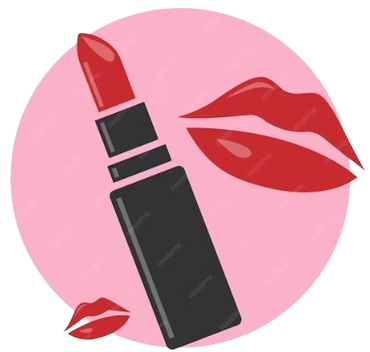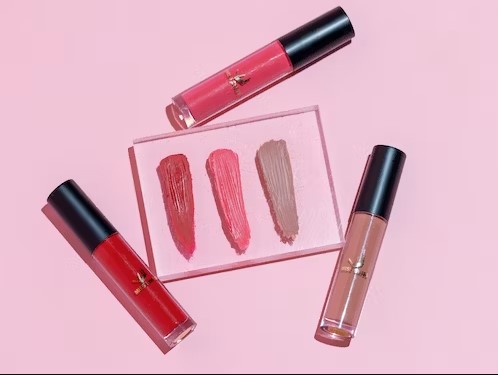APPLICATION OF LIPSTICK
The history of lipsticks that has brought us to this point is closely connected to the large world of cosmetics and the raw materials that are used to make them. The science of making cosmetics is one area that, believe us, has a lengthy history mingled with experimentation and culture. Ultimately, everything that was made was done so to fulfill a need, whether that need was fulfilled by the creation’s practical qualities or appealing beauty. Let’s quickly review the many uses of lipstick and lip paint throughout the years.
Lipstick History in Ancient Civilizations
It might be challenging to pinpoint the specific origin of a trend or idea. Lipstick is one example of this; the practice of donning cosmetics or body paint dates back thousands of years. Numerous ancient societies and tribes had the belief that body paint and designs may bestow enigmatic abilities or divine favor.
It is commonly known that lipstick may have been invented by the people of ancient Sumeria. This was accomplished by smashing gemstones and applying the resulting mixture to their faces as a decorative coating. The lips and eyes were the focal points of this.
Lipstick History in Ancient Egypt
The ancient Egyptians utilized makeup to indicate their social standing, much like how various items, including makeup, are used to convey different messages. According to legend, Cleopatra used scarlet lipstick that was made by crushed ants and carmine beetles.

It’s fascinating to note that makeup in general and lipstick in particular were thought to have therapeutic properties in ancient Egypt. As we previously discussed, the notion that makeup has unusual abilities has existed throughout human history. Even in this day and age, we still think that the appropriate appearance and makeup application can draw attention and increase our visibility. Is it really possible to argue that this is inaccurate? A stylish black dress-wearing woman and Strong red lipstick is still a timeless and striking style.
It’s interesting to note that the cosmetics the ancient Egyptians used DID have magical properties. Because it contained four lead-based substances—galena, cerussite, laurionite, and phosgenite—it was still toxic. It’s safe to say that lead in your cosmetics is not a good way to start your day, even though the exact proportion is unknown.
The decision to use lead in cosmetics by numerous ancient and even more recent civilizations makes a great deal of logic. They can be easily ground into a powder, and many metals impart eye-catching hues that are hard to achieve in naturally occurring materials. We take for granted the information we have today about science; without these fundamentals, we too would be wearing lead and awestruck by its splendor.
Lipstick in Ancient Greece

The regulations governing lipstick in ancient Greece were somewhat intriguing. The main reason sex workers wore cosmetics and red lip paint was because new rules required them to stand out from ladies in the community. If they didn’t, they might be punished and accused of trying to pass for women. Saliva, red wine, sheep perspiration, and—yes, you read it right—crocodile excrement were among the components allegedly employed in this lipstick. Perhaps this mixture had some benefits, especially when weighed against the lead-laden chemicals of other cosmetics that would have disastrous health effects.
This cultural gap would not persist indefinitely, as the Roman Empire gained importance and lipstick for The public once again become interested in fashion. The most eminent poets and philosophers of ancient Greece did not limit this to sex workers; some men also donned red lip paint to stand out despite the prevailing distaste for makeup.
Lipstick in China and Japan

Japan’s geisha are a well-known part of cultural history. These ladies were skilled performers who knew how to sing, dance, and engage audiences. Although they are not the same, geisha and courtesans were frequently misunderstood in western society. The impact of the makeup used to produce the geisha’s bold red lipstick and white faces came from their subtle grace, strength, and elegance in social situations. At the time, tar and beeswax were combined to create a highly thick mixture that was used to make this lipstick in Japan.
Lipstick was first employed for religious ceremonies in ancient China, but as time went on, it was also widely used for beauty purposes. In old prehistoric times, In China, lip balms were more commonly used by both sexes than lipsticks. They came from plant fluids, minerals, and animal blood. A very stunning red pigment was created by using vermillion, a red pigment that is basically mercuric sulfide. Mineral wax and animal fats were combined with this. Well, it looked great, but as you might surely imagine, they were unaware that it was also poisonous.
Lipstick in 16th Century Europe
It wasn’t until Elizabeth I popularized the style for royalty that lipstick became widely used in Europe. During this time, red plant dyes and beeswax were used to make lipstick. Its popularity quickly declined because it was seen impolite and improper, and it didn’t regain it until the late 1800s when a newer mixture containing castor oil, beeswax, and deer tallow entered the market. In the decades that followed, a more recognizable, contemporary lipstick emerged.
Lipstick in the Victorian Era (1837-1901)

Queen Victoria’s declaration that painted faces were unpleasant or vulgar led to makeup being viewed as vulgar. In fact, makeup during this time was closely linked to either stage actors or prostitutes. Either way, neither of them was seen as belonging to the noble class. Cosmetics were often regarded as being low class for this reason alone. One intriguing dilemma that women encountered was that, although lipstick and makeup were portrayed in the Victorian era as obscene and even dishonest, the rigorous emphasis on well-groomed appearances persisted. Therefore, lipstick became a goal that was obtained or produced covertly during the Victorian era. Secretly confident exchanges of recipes and non-traditional methods of lip reddening occurred between ladies seeking to obtain an advantage in a culture known for its social constraining. These examples ranged from explicit formulas for making lip rouge, or lipstick as we call it, to less successful techniques like biting one’s lips to make them redder or applying rosy or red crepe paper to one’s lips to add some color.
As the year 2000 drew near, the stigma around lipstick’s bad and prohibitive past during the Victorian era gradually diminished. Although lip rouge was allegedly offered in public by storefronts by the late 1800s, most people still used it privately. Naturally, this would drastically shift in the 1900s, when opinions regarding lipstick would resemble something more in line with our current societal norms.
Lipstick in the United States
The invention of the cylindrical tubes that held lipstick in its recognizable forms by Maurice Levy in 1915 marked the beginning of lipstick history as we know it today. The rise in popularity of lipstick in the United States may be largely ascribed to the growing awareness of fashion and the allure of well-known actresses who were visible to all in the 1930s and beyond on television. Magazines were already overflowing with advice on how to use cosmetics before this.
Wax with a high melting point, such carnauba or beeswax, is used to make modern lipstick. Common oils include cocoa butter, mineral oil, petrolatum, and olive oil.
History of Lipstick: The Science of Raw Cosmetics Manufacturing
One only needs to take a quick look across history to see how many different cultures have adopted lipstick use for themselves. Regretfully, nearly every one of these mixtures contained some sort of toxicity. When you stop to think about it, it would be very simple to make up a deadly cocktail and have little cause to assume it was harmful if you had no knowledge of the compounds you were obtaining from nature and no method to test them.
One of the largest breakthroughs, aside from the much-needed absence of toxic chemicals like lead, is the state-of-the-art chemistry and science that upscale labs like Phoenix Chemical put into our work. In its most basic form, lipstick is made of a mixture of wax, oil, and an emollient, like any of our several Pelemol emollient goods. The total control you have over the final product is what sets today’s current formulations of lipstick apart from those of the past. With our exact chemistry, Phoenix Chemical can help you realize your goal of creating a lipstick line with a wide variety of tints and a very particular matte finish or extremely glossy appearance. We can even use natural materials to accomplish it!
We’re not the only ones who know that improper nutrition can have a negative impact on your long-term health and wellness. The green movement places a high value on natural ingredients derived from plants and sustainability. Phoenix Chemical is pleased to introduce Green Chemistry in response to that. For companies and brands looking to offer their clients all-natural beauty products, Green Chemistry is the best option.
Reach out to Phoenix Chemical to make your product idea a reality if you’re trying to create new items or launch your cosmetics business properly!



